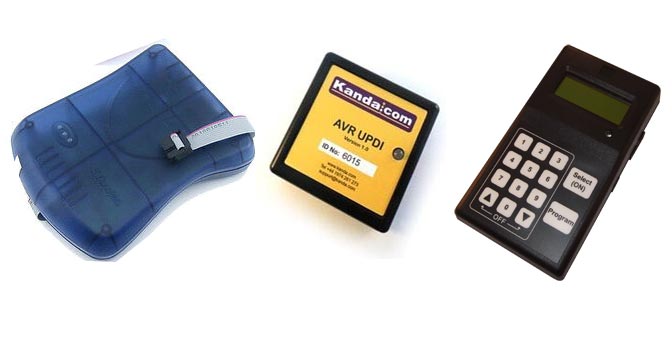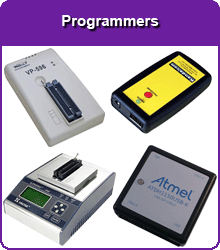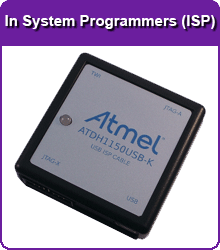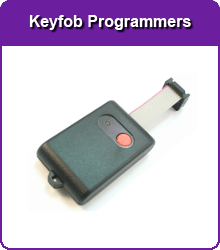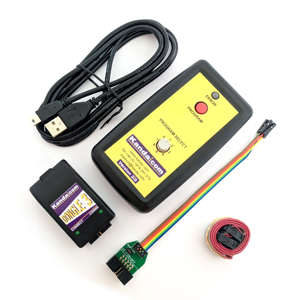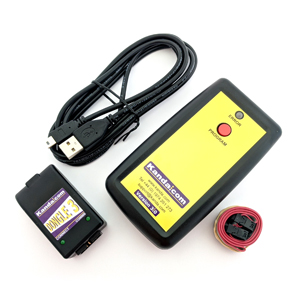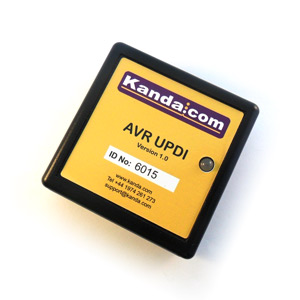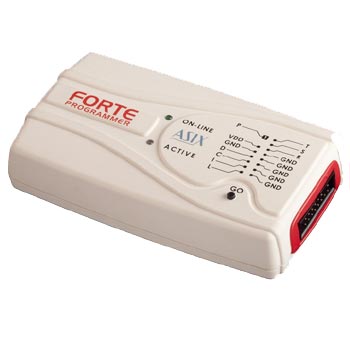Chip Programmers for All Applications
A wide range of Programmers including universal, handheld, gang, ISP and keyfob programmers for development, field and production use. Please look in the relevant sub-category to suit your requirement.
Chip Programmers
Easy programming of chips is vital to effective electronics production. There are different types of chip programmer. Some are better for speed, some are easier to use and some depend on the type of chip to be programmed
In System Programmer (ISP)
ISP is often the best way of programming chips that have ISP capacity. It can be done after board assembly and provides a method of doing field updates. ISP is mainly used for AVR, PIC, ARM, NXP and other microcontrollers.
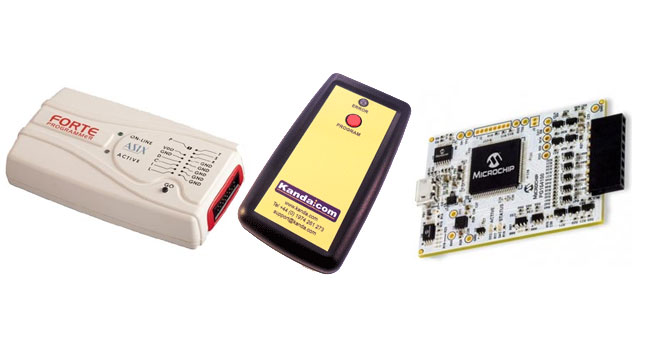
Universal Programmers
Universal programmers have a socket to accept the chip to be programmed, either directly or by using a socket adapter for different package types. They are called universal programmers because they support lots of different devices, including flash memory, EEPROM, microcontrollers and PLDs.
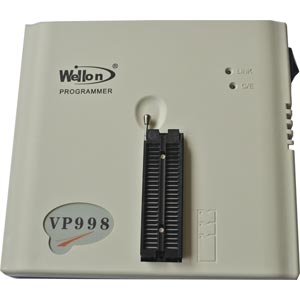
Gang Programmers
Gang programmers are like universal programmers and support lots of different chips but the have more than one socket. This means that they can program 4 or 8 devices at once, which greatly improves production throughput.
Standalone Handheld Programmers
Standalone programmers are loaded from a PC and are then completely portable. They are hand held and usually battery powered but can have a power supply especially if they need to program target. Their major advantage is ease of use in both production and field environments.
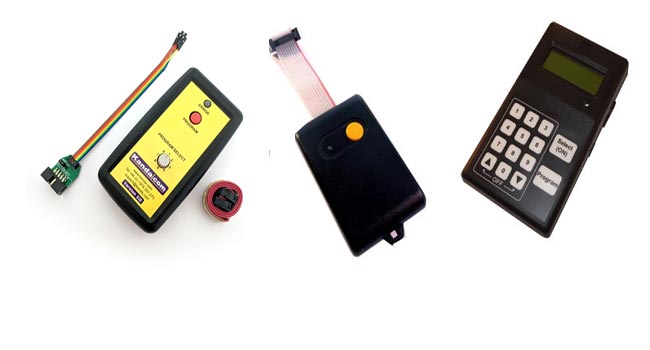
Device Programmers
These are programmers with a socket that only support one type of device, such as AVR microcontrollers, Serial EEPROMs, PIC microcontrollers, Smart Cards or PLDs. They are much cheaper than universal programmers, often easier to use and may have ISP capability as well.
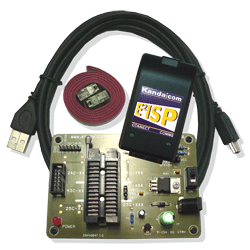
More About Standalone Programmers
Kanda supply a range of easy to use standalone and handheld programmers. The simplest is the keyfob programmer, which is very low cost. Then we have the single handheld and 8-way handheld that can stiore 8 different programs. Top of the range is the portable programmer, with LCD and keypad and 32 programs.
They are battery powered with singloe button press. Supported microcontrollers include all AVR, ATxmega, PIC and SAM D microcontrollers plus serial EEPROMS
